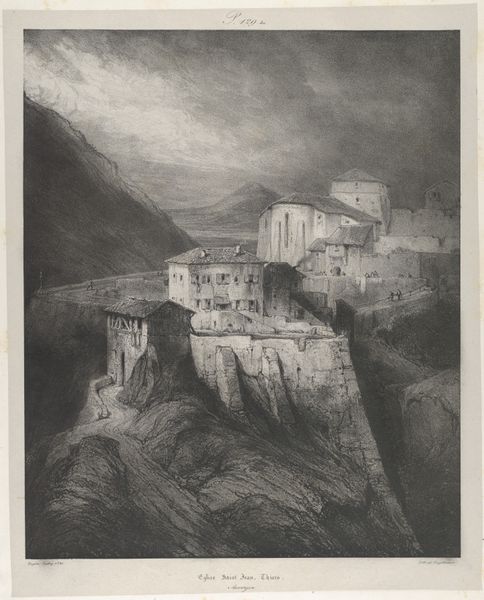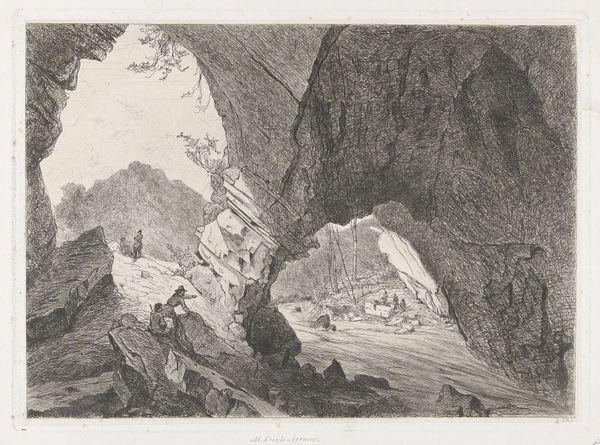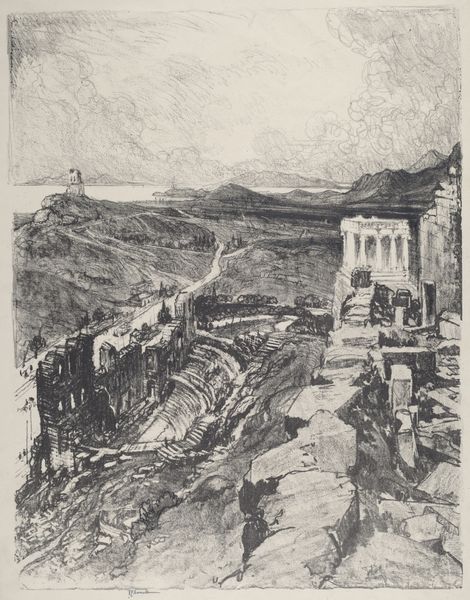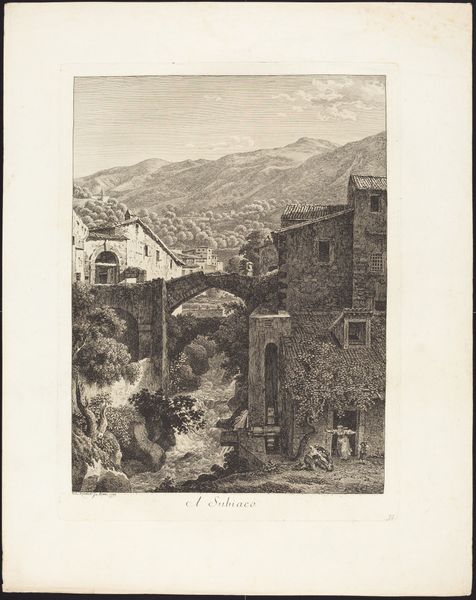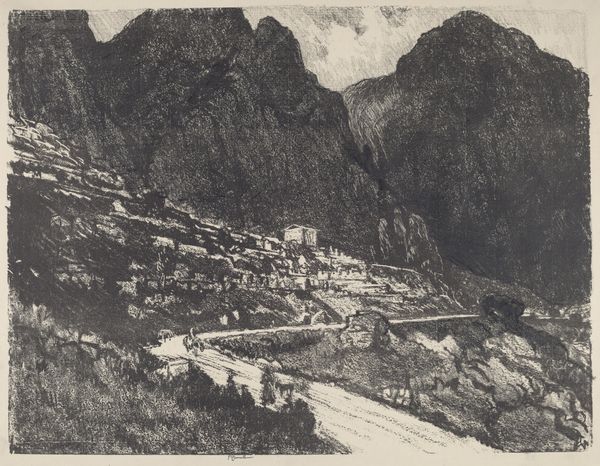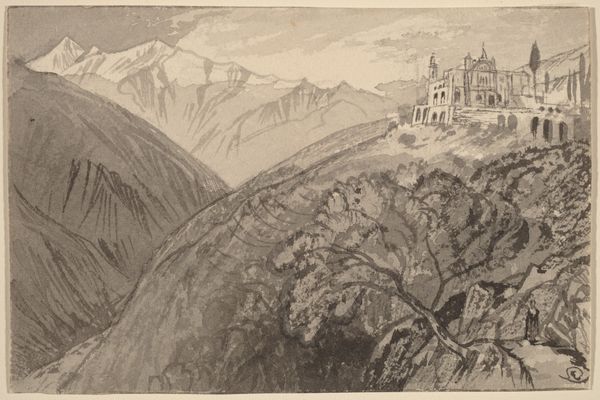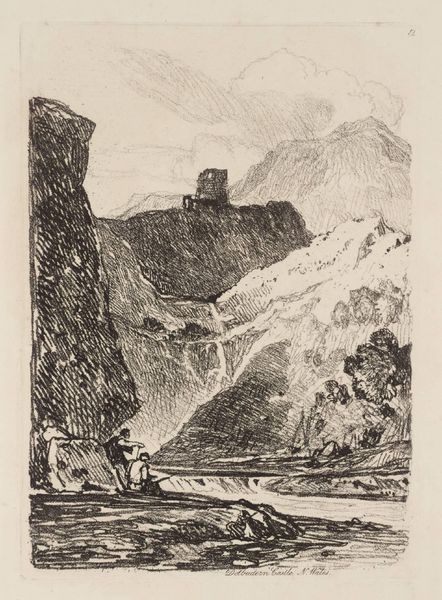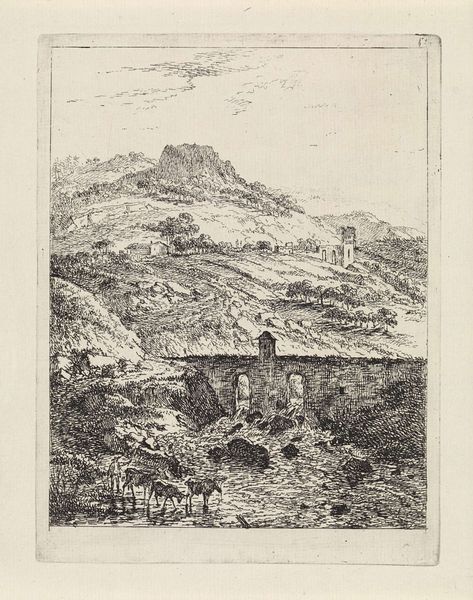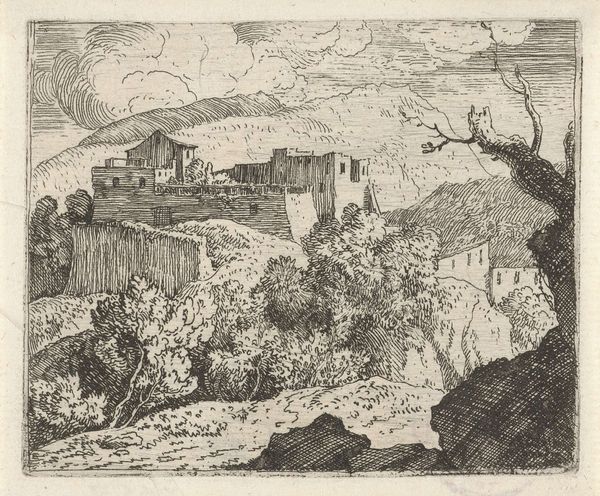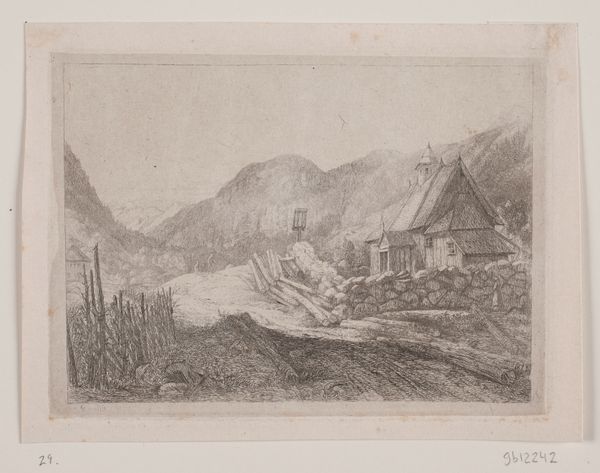
Copyright: National Gallery of Art: CC0 1.0
Curator: This is "The Treasury of Athens, Delphi," a 1913 etching and pencil drawing by Joseph Pennell. It depicts the ancient site. What do you make of it? Editor: The immediate feeling is one of dramatic weight. The steep, winding path and those imposing clouds looming over the structure… it feels like history is bearing down on us. Curator: It’s interesting that you pick up on that sense of weight. Pennell, an American expatriate, was very interested in illustrating scenes of both modern industry and the remains of ancient grandeur like this. He saw Delphi as more than just a picturesque ruin. Editor: Right, because ruins aren't neutral sites, are they? They speak to power, to the rise and fall of civilizations, and, in this case, the Western fascination with Ancient Greece. Look at the neoclassical structure against that imposing mountain. The architecture almost seems defiant in the face of nature's power, a real symbol of cultural dominance. Curator: Absolutely. The Treasury itself was a significant civic monument, erected by the Athenians to house their dedications to the god Apollo. Pennell captures the grandeur of the location itself, making sure to include winding roads where he uses lots of pencil markings for texture and details. Editor: And there's a strong sense of absence, too. We see the ruins, but not the people. Where are the figures that would give it context? Does the solitude emphasize the distance between our time and that of ancient Greece? Who is this piece for? I think that must be asked when deciding who the audience is and when considering Pennell’s intentions. Curator: That silence invites reflection, I think. Consider Pennell's larger body of work. His drawings of industrial sites, for example, aimed to capture the dynamic energy of progress. Here, perhaps he sought to document not just the site but also evoke a sense of the past weighing on the present. Editor: So, what is Pennell inviting us to weigh? It seems to prompt questions about our relationship with antiquity, doesn't it? Curator: Yes, questions about legacies, appropriations, and the very stories we choose to tell. Editor: In many ways, art invites conversation across time. Curator: A testament to what survives and the many meanings we continue to build onto it.
Comments
No comments
Be the first to comment and join the conversation on the ultimate creative platform.

